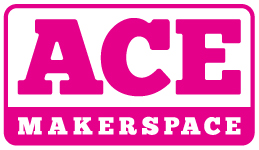* You will get some experience with PLA first.
* You will thoroughly investigate published recommendations for temperature, bed adhesion, etc. Beware of out-of-date information. Favor manufacturer’s recommendations. Favor instructions specific to our printers if available.
* If you break the printer you will report it to the steward promptly and agree to help fix it.
* You will avoid materials that are known to erode the printer nozzle, unless you purchase a replacement nozzle in advance.
* You will thoroughly clean up the printer when done (particularly any glue-stick residue on the bed), and will reload PLA before leaving, thus purging the nozzle of your material.
* You will report your results on this wiki page.
== Intro resources ==
Tom Sanladerer’s channel is probably the best 3D printing resource on Youtube. He’s recently published a series of videos about various plastic types. This is a starting point: find the manufacturer’s info too, if possible:
*[http://www.youtube.com/watch?v=jN26oXPNZd0 Filament Basics]
*[http://www.youtube.com/watch?v=unmvWkfpmRE Things you should know about PLA]
*[http://www.youtube.com/watch?v=YCdvL87bv0w Things you should know about ABS]
*[http://www.youtube.com/watch?v=8_adY2K-YIc Things you should know about PETG]
*[http://www.youtube.com/watch?v=KhYfhACp8tU Things you should know about Flex and Nylon]
== How to use this table: ==
{| style="width:800px" border="0" cellspacing="1" cellpadding="1"
|-
| Date
| The date of the test
|-
| Name
| Your name including email address or slack handle
|-
| Type/color
| Briefly identify the type of filament used, including manufacturer if available
|-
| printer
| Which printer you used
|-
| Slicer/settings
| For brevity, list the profile or preset you started with, and only the differences from defaults
|-
| Web resources
| Link to the web page that you referenced when using this filament
|-
| Bed preparation
| Glue stick or other bed preparation used
|-
| Comments
| What did you make? Do you like this stuff? how’d it come out?
|}
== 3D printer settings for Nonstandard Materials ==
{| style="width:800px" cellspacing="1" cellpadding="1" border="1"
|-
! scope="col" | Date
! scope="col" | Name
! scope="col" | Type/color
! scope="col" | Printer
! scope="col" | Slicer/settings
! scope="col" | Web resources
! scope="col" | Bed Preparation
! scope="col" | Comments
|-
| 10-2017
| Damp Rabbit
| Makeshaper Semi-Flexible TPU, green
| Prusa i3 MK2
|
Prusa defaults:
Print settings – "0.20mm Semiflex or Flexfill98A"
Filament – "Semiflex or Flexfill98A"
| Many
| None, excellent adhesion on it’s own. Could be too much.
|
The Prusa defaults gave me the best results. I changed a few things like temp. and 1st layer width but found the defaults to work the best. I had issues with strings but everything else was fine. Prints very slowly. The light flex of the urethane is very nice compared to the rigid, brittle feel of PLA.
Watch the first layer carefully to make sure random blobs or strings don’t get dragged into the print.
I made a control knob for a guitar that press fits over a fluted shaft. Printing it upside down hid the string issues under the knob, I’m very pleased with the results.
|-
| 10-2017
| Damp Rabbit
| Makeshaper TPU 85A, blue
| Prusa i3 MK2
|
Prusa defaults:
Print settings – "0.20mm Semiflex or Flexfill98A"
Filament – "Semiflex or Flexfill98A"
| Many
| None, excellent adhesion on it’s own. Could be too much.
| I was under the impression the same settings for Semi-Flexible TPU would work here. This was a failure. Very difficult to get to load, and once I had a decent flow and ran a print the result came out like a kitchen sponge. My small test print finished but was badly deformed and almost foamy.
|-
| 10-2017
| Damp Rabbit
|
MadeSolid Strong Filament – Red
PET+
| Prusa i3 MK2
|
Prusa defaults:
Print settings – "0.20mm NORMAL"
Filament – "Prusa PET 1.75mm"
| Many
| None, excellent adhesion on it’s own. Could be too much.
|
The Prusa defaults worked fine here. I accidentally had the speed set to 110% and had some lower layers delaminate but once returned to 100% my small test print finished with no problems and looked good.
|-
| 3-2018
| Matt Keveney
| MakeShaper sample PETG
| Prusa i3 MK2
| Filament ‘Generic PET’
| makeshaper website
| None
| Terrific results straight off the bat. Nice stuff; flexible like ABS but easy to print.
|}
[[Category:3D Printers]] [[Category:Resources]]
